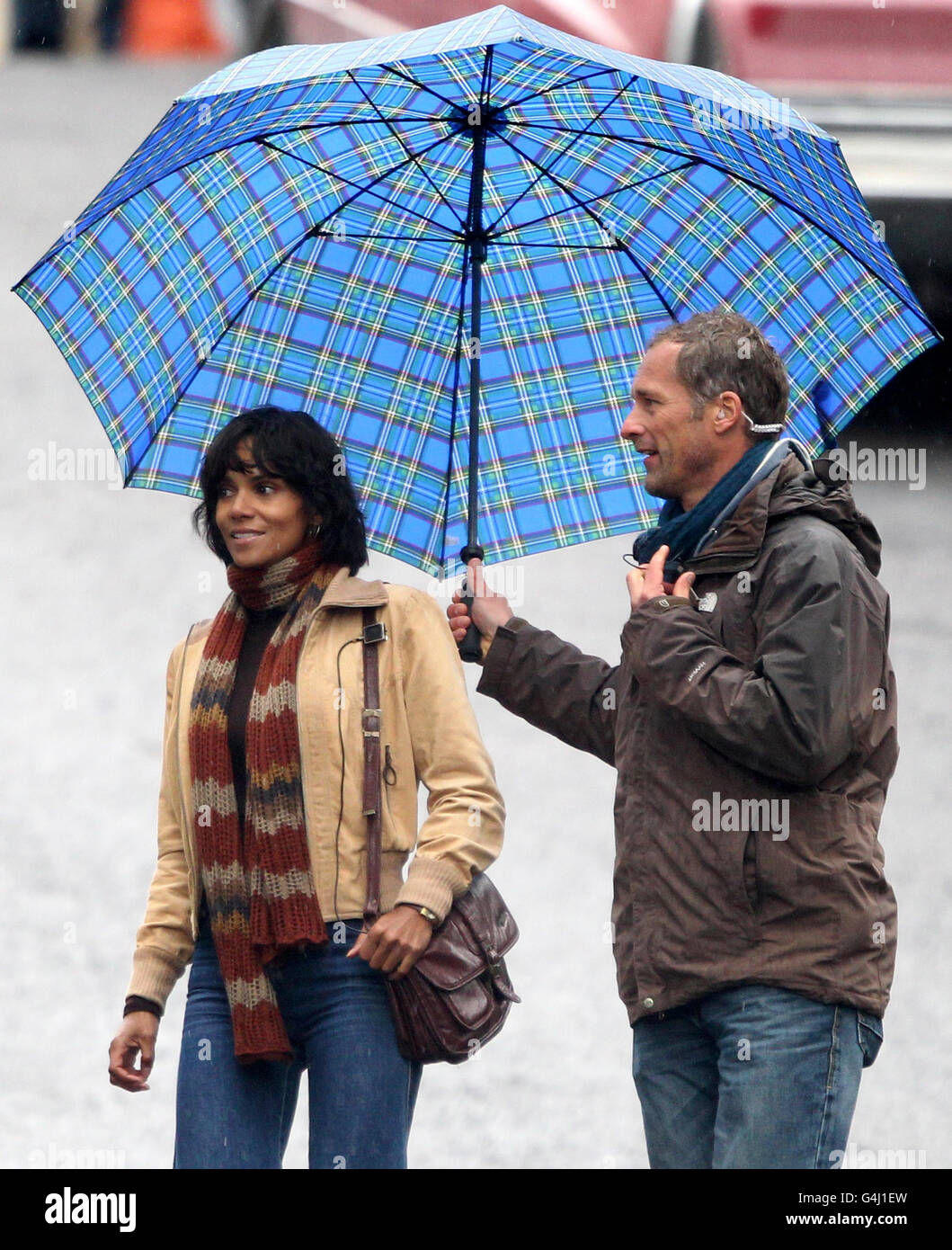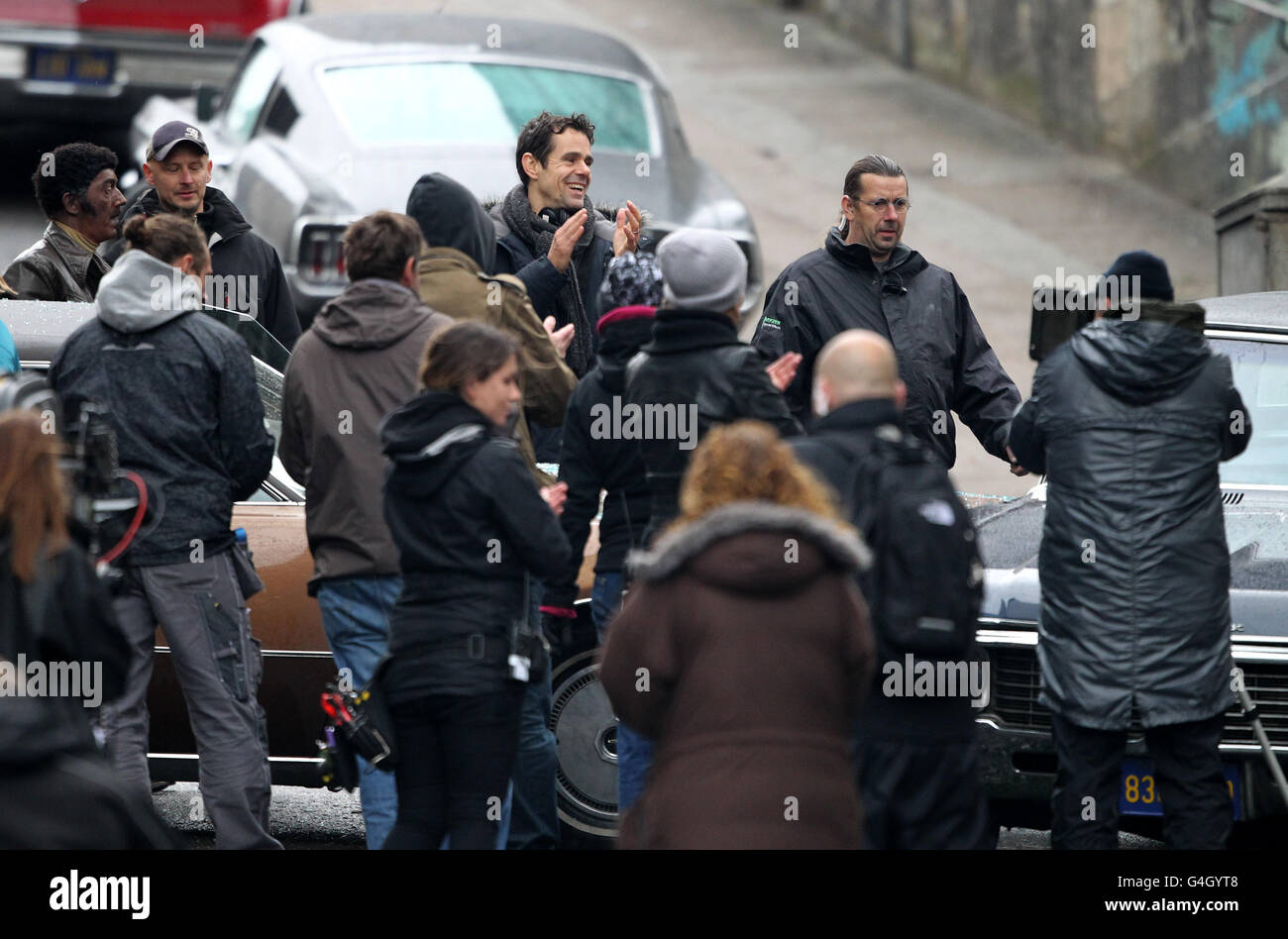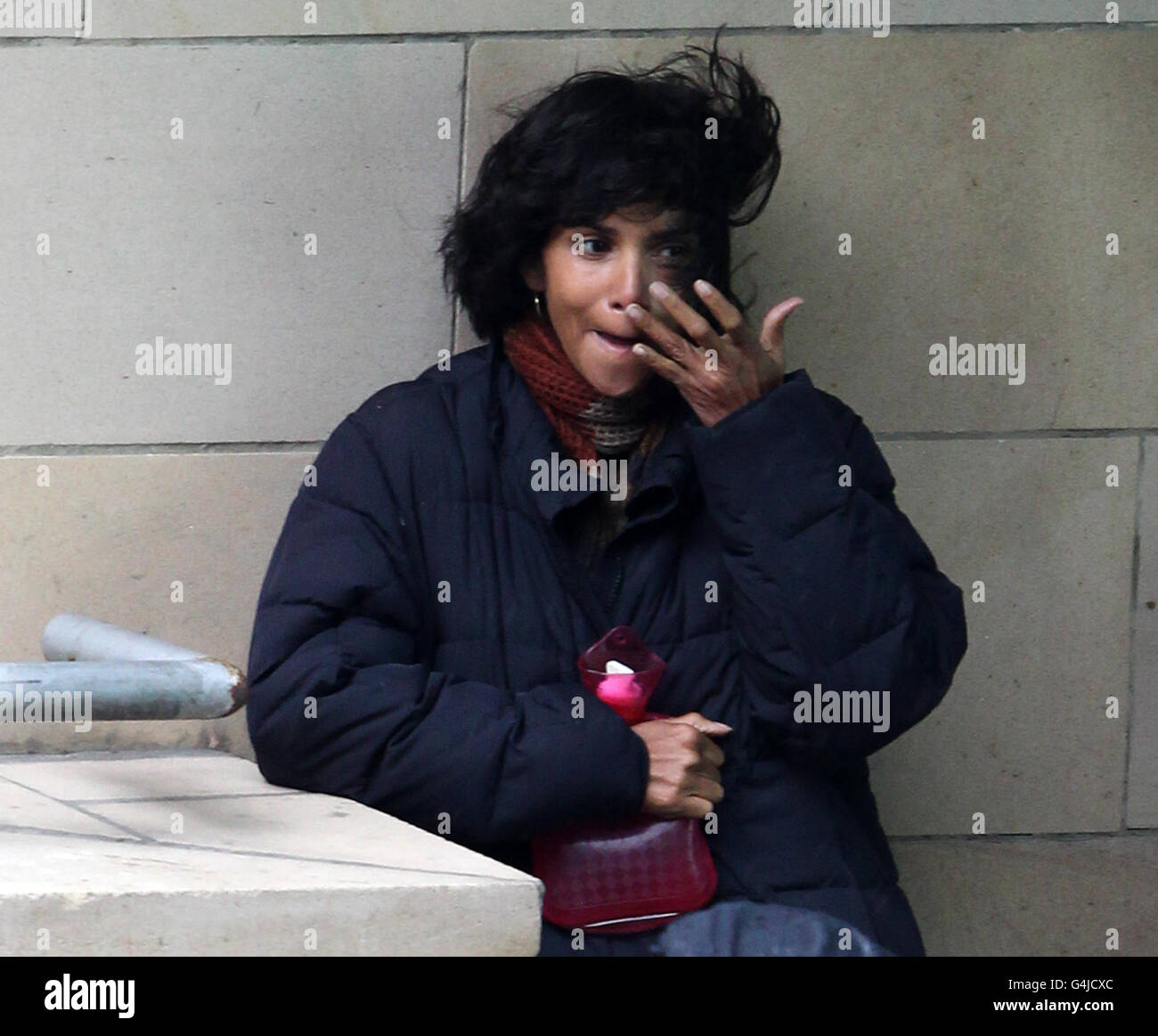Have you ever wondered what it takes to bring a truly ambitious story to the big screen? The sheer scope of Cloud Atlas, a film that spans centuries and weaves together six distinct narratives, certainly makes you think about it. It's a movie that, you know, asks a lot from its makers, pushing the limits of what cinema can do. The ambition behind Cloud Atlas filming was something truly special, a huge effort to connect different times and places.
This film, released in 2012, really captures the imagination with its tales of interconnected lives. It jumps from the 19th century to a distant future, showing how actions in one era can echo through others. People who watch it often talk about how much thought went into the whole project. It’s a story that, in a way, feels like a vast network, much like how we access information today.
Much like how you can log in to a cloud service to get your photos or documents from any device, anywhere, Cloud Atlas presents its stories as if they are all part of one big, accessible collection. You can save your files and photos to a service like OneDrive, and then get to them from, well, any device, anywhere. This film's narrative structure works in a similar way, letting you see how pieces of a story connect across time and space, just like data stored in a distributed collection of servers, always there for you to access over the internet.
Table of Contents
- The Grand Vision Behind the Camera
- Actors Wearing Many Faces
- Locations and Setting the Scene
- Visual Effects and Story Weaving
- The Production Challenges
- Frequently Asked Questions About Cloud Atlas Filming
- The Lasting Impact of a Unique Film
The Grand Vision Behind the Camera
The directors, Lana and Lilly Wachowski, along with Tom Tykwer, really took on something huge with this film. They wanted to make a movie that felt like a big, flowing river of stories. It was their idea to have the same actors play many different people across the various timelines. This decision, you know, made the whole Cloud Atlas filming process quite unique.
They aimed to show how all life is connected, how one person's choices can ripple through generations. This vision meant they needed to be very clever with how they shot everything. They had to think about how each small part would fit into the bigger picture. It was, in some respects, like putting together a giant, complex puzzle.
The directors shared a common goal: to keep the spirit of the original book alive while making it work for the screen. They worked very closely together, even filming some parts at the same time in different places. This collaborative approach was, honestly, a big part of how they managed such a massive project.
Actors Wearing Many Faces
One of the most talked-about parts of Cloud Atlas filming is how the actors took on multiple roles. Stars like Tom Hanks, Halle Berry, and Jim Broadbent, you know, appeared in several different stories. They played different genders, different ages, and different races. This was a pretty bold choice for any movie.
The Challenge of Multiple Roles
Imagine being an actor and having to switch between characters, sometimes within the same day. It meant they had to really understand each person they played. They needed to change their voice, their body language, and their whole way of being. This was, as a matter of fact, a big test of their acting skills.
For example, Tom Hanks played six different people, from a villainous doctor to a simple goat herder. Each role required a completely different approach. This kind of work, you know, asks for a lot of dedication from the performers. It shows their commitment to the story.
Halle Berry also had many parts, including a journalist, a male Korean doctor, and a tribal elder. The shifts were sometimes dramatic. This aspect of the movie really got people talking, and it was a core part of the Cloud Atlas filming identity.
Makeup and Transformation
To help the actors change so much, the makeup and costume teams did incredible work. They used prosthetics and special makeup to alter faces and bodies. It took many hours each day to get some of these looks just right. This was, honestly, a huge part of the filming process.
The transformations were so complete that sometimes it was hard to recognize the actors. This was the whole point, of course, to show how souls might reappear in different forms. The artistry involved in these changes was, truly, something to admire. It made the film feel even more magical.
This detailed work meant early mornings and late nights for the makeup artists. They had to be very precise with every piece. It was, you know, a true collaboration between the actors and the artists to bring these characters to life across time.
Locations and Setting the Scene
The stories in Cloud Atlas happen all over the world and across many centuries. This meant the Cloud Atlas filming crew had to find a lot of different places to shoot. They needed to make each time period feel real and distinct. This was, in fact, a big logistical challenge.
Diverse Filming Spots
They filmed in various spots, from remote Scottish islands to bustling German cities. Each location had to match the specific story it was telling. For instance, the futuristic Neo Seoul required a very different kind of setting than the old Pacific ocean voyage. This variety, you know, added so much to the film's look.
Some scenes were shot in Germany, where they had large studio spaces. Other parts took them to very natural, wild places. This mix of studio work and outdoor shooting was, you know, quite common for a film of this size. It helped them create many different worlds.
The production team had to plan every move carefully, transporting equipment and people to these diverse sites. This was, pretty much, a huge undertaking. It shows the dedication to making each segment of the film look authentic.
Building New Worlds
Beyond finding existing places, the filmmakers also built elaborate sets. They constructed parts of a future city and recreated historical ships. These sets helped immerse the audience in each story's unique environment. It was, arguably, essential for the film's success.
The detail in these sets was quite something. Every prop and piece of furniture was chosen to fit the specific time period. This attention to detail, you know, makes a big difference in how believable a film feels. It helps you really get lost in the story.
For the more futuristic settings, they combined physical sets with digital extensions. This allowed them to create truly vast and imaginative places. It’s like how digital cloud storage lets you keep a vast online storage space where people and businesses store their files and applications, accessible from anywhere with an internet connection. The film builds its worlds in a similarly expansive way, making them feel boundless.
Visual Effects and Story Weaving
With so many different timelines and fantastical elements, visual effects played a very big part in Cloud Atlas filming. They used these effects to create impossible landscapes and seamless transitions between stories. It was, truly, a masterclass in movie magic.
Crafting Futuristic Landscapes
The future segments, especially Neo Seoul and the post-apocalyptic world, relied heavily on computer-generated imagery. Artists created towering buildings, flying vehicles, and desolate ruins. These digital creations helped bring the directors' visions to life. It was, you know, a very complex process.
They blended practical effects with digital ones to make everything look real. For example, some explosions might have been real, with digital enhancements added later. This combination, you know, often yields the best results in filmmaking. It gives a sense of weight to the visuals.
The visual effects teams worked for a long time after the main filming was done. They polished every detail, ensuring that the different worlds looked consistent yet unique. This post-production work was, basically, just as important as the shooting itself.
Connecting the Narratives
Beyond creating worlds, visual effects also helped link the stories together. Subtle visual motifs and transitions were used to show connections between characters or events across different eras. This was a clever way to reinforce the film's central theme. It was, like your, a visual thread running through the whole movie.
Sometimes, a character's birthmark would appear on a different character in another timeline. These small visual cues were often added digitally. They helped the audience pick up on the deeper meanings without being too obvious. This kind of detail, you know, makes a film richer.
The entire film feels like a vast online storage space, where people and businesses store their files and applications, accessible from anywhere with an internet connection. Just as you can access your photos, mail, notes, and documents from iCloud or OneDrive, the film allows you to access these interconnected stories, themes, and characters from any point in its narrative, creating a truly distributed collection of experiences that is accessed over the internet of its own storytelling.
The Production Challenges
Making a film of this size is never easy, and Cloud Atlas filming faced many hurdles. One of the biggest was getting enough money to make it. It was an independent film, meaning it didn't have the backing of a big studio at first. This was, obviously, a tough start.
The directors had to get creative to secure funding, even putting some of their own money into the project. They convinced investors by showing their passion and the unique nature of the story. This kind of dedication, you know, is pretty rare in Hollywood. It shows how much they believed in the film.
Logistics were also a huge challenge. With three directors, multiple units filming at once, and actors constantly changing roles, coordination was key. They had to plan every single day down to the minute. This level of organization, you know, is incredibly demanding.
Weather was another factor, especially during outdoor shoots. They filmed in places where conditions could change very quickly. Sometimes, they had to stop filming because of rain or strong winds. This meant they had to be flexible and ready to adapt their plans at a moment's notice. It was, in fact, a constant balancing act.
The sheer number of costumes, props, and sets also added to the complexity. Everything had to be made, transported, and maintained. It was, pretty much, like running several small businesses at once. This behind-the-scenes work is often unseen but is, definitely, vital to any big movie.
Despite all these difficulties, the crew and cast kept going. Their commitment to the vision helped them overcome each obstacle. The final film stands as a testament to their hard work. It shows what can be done when people really pull together for a common goal. You can learn more about film production on our site, which might give you more insights into these challenges.
Frequently Asked Questions About Cloud Atlas Filming
People often have questions about how such a complex movie came together. Here are a few things people often ask about the Cloud Atlas filming process.
How many roles did actors play in Cloud Atlas?
Many of the main actors played multiple roles, sometimes as many as six or seven. For example, Tom Hanks, Halle Berry, Jim Broadbent, Hugo Weaving, Jim Sturgess, Doona Bae, and Hugh Grant each took on several different characters across the various timelines. This was, honestly, a core part of the movie's identity.
Where was Cloud Atlas filmed?
The movie was filmed in a few key locations, primarily in Germany and Spain. They used studios in Babelsberg, Germany, for many of the interior and green screen shots. Outdoor scenes were captured in places like Scotland and Mallorca, Spain, to represent the diverse settings of the stories. This allowed them to create a wide range of environments. You can also discover more about the movie's unique storytelling by visiting this page .
Was Cloud Atlas difficult to film?
Yes, it was considered a very challenging film to make. The independent funding, the multiple directors working simultaneously, the complex makeup and costume changes for actors playing many roles, and the extensive visual effects all added to the difficulty. It was, pretty much, a huge undertaking that required immense coordination and dedication from everyone involved. You can find more details about its production on sites like IMDb.
The Lasting Impact of a Unique Film
Even years later, the way Cloud Atlas was filmed still gets people talking. It showed that movies could be made in new, interesting ways, even with big ideas. The dedication to its unique vision, you know, really stands out.
The film, in a way, feels like a vast online storage space where people store their files and applications, accessible from anywhere with an internet connection. Just as you can sign in with your Apple account to access Apple services, or save files to OneDrive and get them from any device, anywhere, Cloud Atlas offers a similar kind of access to its interwoven stories. It's a distributed collection of narratives, much like servers hosting software and infrastructure, all accessed through the "internet" of its narrative flow. This approach makes the film’s themes of connection and recurrence feel truly tangible.
The ambition of Cloud Atlas filming continues to fascinate film lovers and makers alike. It reminds us that storytelling can break boundaries and connect us across time and space. So, if you're curious about how such grand visions come to life on screen, perhaps watch it again with new eyes, thinking about all the effort that went into it.



Detail Author:
- Name : Carolyn Dietrich
- Username : robb.pacocha
- Email : georgianna79@hotmail.com
- Birthdate : 1991-08-02
- Address : 8485 Veum Loop Apt. 946 South Isidrofurt, WV 75413-4244
- Phone : +1-361-678-1352
- Company : Brekke, Toy and Kihn
- Job : Power Distributors OR Dispatcher
- Bio : Ea omnis excepturi vitae consequatur neque vero. Odit vero quia sed qui et esse beatae. Nemo tempora inventore adipisci. Culpa maxime blanditiis aliquid porro velit qui aut.
Socials
instagram:
- url : https://instagram.com/knicolas
- username : knicolas
- bio : Voluptates rerum numquam doloremque nam est sit aspernatur. Architecto id id sed.
- followers : 6459
- following : 2439
facebook:
- url : https://facebook.com/knicolas
- username : knicolas
- bio : Consequatur et sed quia odio. Facilis eum error cupiditate.
- followers : 599
- following : 1795